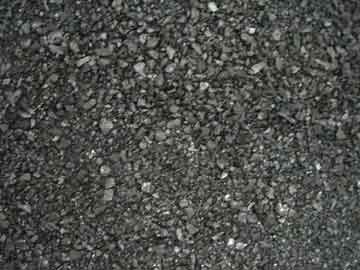Know More About Calcined Petroleum Coke
It is well-known that calcined petroleum coke (CPC) is the product gotten from calcining petroleum coke that is the product of the coker unit in a crude oil refinery. The calcined petroleum coke is applied to mainly manufacture anodes used in Aluminium industry, steel industry and titanium smelting industry, etc. Green coke must have enough low metal content as anode material. Green coke with the low metals content is referred to as anode grade coke. Green coke with over high metal content should not be calcined and used for burning. So the green coke is also named fuel grade coke. (You may be interested in Flyer's steel silo for the storage of calcined petroleum coke, too.)

To Master Chemical Compositions of Calcined Petroleum Coke is Important for Us
Why is it important for us to master chemical ingredients of calcined petroleum coke? It is the reason that it will be conducive to understanding disadvantages as well as advantages of the coke for us.
Classification:
According to the appearance of the coke, it can be divided into four types, needle coke, sponge coke, spherical coke and shot coke; According to amounts of sulfur content it consists, it can be divided into two types: high sulfur coke mainly used as fuel in cement plant or power plant, low sulfur coke (sulfur content: less than 0.5%).
Physical and Chemical Properties:
The coke is black or dark grey hard solid with metallic luster, about 90%-97% Carbon content and 1.5%-8% Hydrogen content, also containing some other heavy metals. The composition of petroleum coke is the product transformed from the thermal cracking process of heavy oil after distillation separation of crude oil, which accounts for about 25%-30% of the output of crude oil.
Passive Impacts:
There are many good merits for the coke in a variety of industries, but seen from its ingredient analysis, we can find out that it may have potential passive impacts on human health and environment, for example, hazardous substances. The recent increase in the coking capacity in China indeed has raised worries about the potential impacts of the coke on both human health and the environment including air quality hazards, water quality hazards, and potential exposure to hazardous substances.
According to the U.S. Environmental Protection Agency (EPA), the CPC is generally stable under normal conditions; however, many substances have the potentials to become flammable or explosive when some conditions have changed such as temperature. The emissions from the combustion accidentally or purposefully of the CPC must have passive impacts on human health and environment nearby , including the workers, local habitants and children, the animals, the contamination of surrounding land, the disperse of common pollutants, hazardous substances and greenhouse gases.
When the coke is combusted, common pollutants and hazardous substances from decomposition may be produced such as sulfur dioxide, carbon monoxide, carbon dioxide, nitrogen oxides, heavy metals and particles, depending on the chemical composition of the CPC. Some accidents may take place unintentionally through natural or wrongdoing combustion of air-borne or surface dusts or through the combustion of the coke for power generation or any other purposes.
 Español
Español
